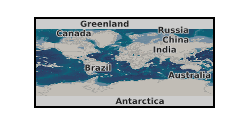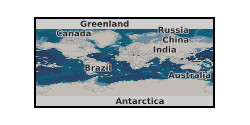Seismic velocity
Type of resources
Topics
Keywords
Contact for the resource
Provided by
Years
Formats
Update frequencies
-

The thermal state of marine sediments controls a range of potential dehydration reactions as sediments are subducted. In thick sediment sections it is possible that reactions that would normally occur within a subduction zone start offshore of the deformation front. This scenario may be occurring at the Sumatra subduction zone (e.g. Geersen et al., 2013; Huepers et al., 2017). We have investigated this possibility by modelling the thermal and depth history of sediments offshore Sumatra. We have used a range of different assumptions about how the sediments decompact with depth, as well as testing the dependence on the seismic velocities used for depth conversion of the horizons.
-

The dataset contains condensed results of seismic refraction survey, that can be regarded as “hard data”. Data files Syczyn-1_P.ASC and Syczyn-1_S.ASC represents tables obtained for line Syczyn-1, wave P and wave S respectively; Data files Syczyn-2_P.ASC and Syczyn-2_S.ASC represents tables obtained for line Syczyn-1, wave P and wave S respectively. Each file contains 4 columns: Record No. – sequential record identifier; Source location – distance from the beginning of the line to the (current) source point (in meters); Receiver location – distance from the beginning of the line to the given receiver (in meters); First Break – delay time between emission of the wave to its arrival at the given receiver point (seconds). Dataset is formatted in simple table, that can be imported to other seismic software for modelling velocity field. Different computing algorithms generate slightly different velocity models, so it can be useful to have hard data for comparison.
 NERC Data Catalogue Service
NERC Data Catalogue Service